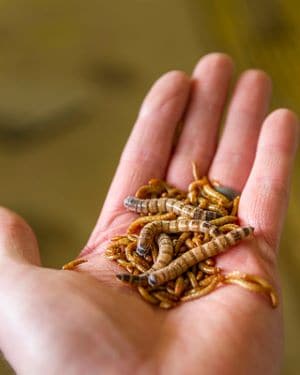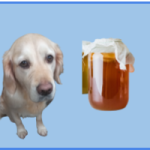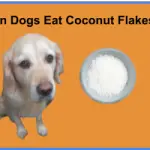
OK, many of you reading this are probably questioning my sanity right now.
Wondering who in their right mind would want to feed their dog mealworms.
But there is an excellent reason why this question needs to be asked and answered.
Today we live in a world where people are very conscientious of how living their life affects the world, and more importantly, the surrounding environment.
People have made changes to their diet, some even eating insects, like mealworms, trying to be more environmentally friendly.
Many people have asked the same questions about what they feed their dogs. Does dog food have a negative effect on the environment?
What are some safe alternatives to mass produced dog food?
Is dog food bad for the environment?
Before we get too deep into the question of if dog food is bad for the environment, we need to address the validity of the information about to be presented.
Over the years there have been many studies about the effects of people’s diets on the environment at large.
That being said, there are still many unanswered questions, and more studies that need to be done. This article is not meant to decide this very sensitive issue.
Instead, this article is meant to provide some background about why people may look for alternative meals for their furry friends and if those alternatives are actually safe for them. Now let’s look at some arguments about dog food and its effect on the environment.
When you browse through the dog food aisle at your local grocery store, many owners will stop and check the ingredients.
What you will notice is that a majority, if not all, of them contain at least one type of meat. Personally, my favorite dog food brand has salmon in it, because the Omega-3 fatty acids help with my pups immune systems.
This is where things get a little crazy, so stick with me.
Worldwide, dog ownership has seen a rise over the years. It’s estimated that pet ownership in China grew over one hundred percent in 2018 alone.
This means that there is an increase in the amount of dog food that is being produced, and an increase in the amount of meat needed for that dog food.
Now this is where we get into where more studies are needed.
Let’s look at the information that people concerned with meat production cite. According to an article published on Vox.com in April 2021, the meat industry is responsible for 14.5 percent of all human made greenhouse gases.
That same article cites a UCLA Geographer who states that up to 25 percent of meat production worldwide is dedicated to dog food production.
Doing a little math means this article claims that dog food production makes up for about 3.63 percent of man-made greenhouse gases.
As I mentioned before, many people have taken a proactive approach to reducing their impact on the environment.
One of the most popular methods is to reduce or remove the amount of meat they eat. This has seen a marked increase in the amount of people that have shifted to pescatarian, vegetarian and even vegan diets.
But why mealworms?
Like many people, you might ask what is a mealworm and who would ever eat one? A mealworm comes from the mealworm beetle.
After hatching from eggs a mealworm is the larval state of the beetle, before it moves on to the pupa stage (think of pupa as the puberty stage).
In the wild mealworms are eaten by many types of birds because of their high protein content. It’s that high protein content that causes the birds to also feed them to their young to help them grow.
They are also eaten by many reptiles and amphibians, who often target where their eggs are laid, waiting for them to hatch.
But why would humans eat mealworms? While not very common in the west, many cultures around the world have incorporated insects into their diets.
Mealworms are no different, a quick search of google will show a multitude of recipes that attempt to make them sound appealing. Ok, maybe that’s my western hangups about eating insects.
Many diets that don’t include meat have been found to be lacking in protein, which the human body needs.
Sometimes people on plant diets will take protein supplements to make sure they get the required amounts.
There are other people who look for a more natural way to increase their protein intact, with things like nuts.
Mealworms are a substantial source of protein, each worm being between twenty and fifty percent protein depending on if it is eaten live or dried.
Mealworms are also wonderful sources of fat and fiber. Live mealworms can even be used as a temporary source of water if you ever find yourself in a survival situation.
Eating insects is better for the environment
Mealworms are insects.
Scientists are fascinated by the potential that many insects have to change the way that humans and livestock eat.
You see, the current model is unsustainable.
We can’t keep trying to raise more and more cows, chickens and pigs in order to satisfy our unquenchable thirst for meat or protein.
As the world’s population grows, demand will just exceed supply.
It takes a lot of resources to raise the hundreds of billions of livestock that are needed each year.
And the process emits huge amounts of greenhouse gases.
Yes, those gases which are responsible for climate change.
And so this begs the question of why would eating insects be any different?
If we could overcome our squeamish attitude towards eating animals that look like aliens, insects may offer the human race a lifeline.
Firstly, like for like, insects are better at converting the food they eat into protein than your average cow or pig and so they are pound for pound more nutritious.
And not only do insects use less resources to produce better nutrition but also the greenhouse gases that are emitted as part of the process are much less to boot.
And we are just talking about people here.
Much of our livestock eats soybeans and clearing land (and forests) to grow more soybeans has caused untold damage to the environment.
If insects could be fed to livestock instead of soybeans that could massively reduce the destruction.
But let’s refocus- back onto mealworms and dogs.
But are mealworms safe for dogs?
To put in plainly, and release you from the suspension you’ve been in since you read the title of this article, mealworms are safe for dogs.
Some people have even written articles talking about how pets will see them as delicacies.
Like people, dogs can benefit from the protein, fat and fiber found in mealworms, and will eat them both live and dried out.
Many people have used mealworms as a form of a treat or reward for their four-legged friends.
Dogs, like humans, are omnivores, meaning they can derive nutrients from meat, vegetables and other sources.
This differs from cats, who are carnivores and need to eat meat in order for their bodies to extract the nutrients needed for them to survive.
So yes, our dogs can eat mealworms, and they can extract nutrients from them, but it is still not a good meal substitute.
This is because of the nutrients that dogs need in order to remain healthy. Mealworms contain some nutrients dogs need, protein, fat and water.
But they don’t contain enough of those nutrients to sustain them. What more, dogs also need carbohydrates, several vitamins and minerals.
These nutrients can be found in the wet or dry dog food that you buy at your local grocery store.
Dog Safe Non-Meat Diets
Now there may be some people who are still looking for another way to feed their dogs that doesn’t include meat products. The question is, are there any safe non-meat diets available for dogs. The brief answer to this is that there really is no answer. But there is some information that can help you make the decision that is right for your dog.
The first is that there are only two reasons that a dog would have a non-meat diet. First, and most common, is the personal ethics or decisions of their humans. The second and more rare is because of being allergic to certain animal proteins. When encountering food allergies, most veterinarians will suggest a hypoallergenic diet for eight to twelve weeks to monitor improvement. These diets, which can be purchased from any pet store (in person or online) usually have only one animal protein, like lamb or turkey, which are rarer for dogs to have reactions to.
There are several vegan brand dog foods available on the market. But Dr. Cailin Heinz, VMD gave an interview to WebMD highlighting some of the dangers for an all vegetarian diet. While your dog can technically survive on a vegan diet. Vegan diets may cause dogs to receive an inadequate amount of protein that can lead to weight loss, lethargy, and difficulty breathing. Vegan diets can also cause an imbalance in your dog’s amino acids, which can lead to heart problems and other illnesses. Finally, dogs on an all vegan diet can experience vitamin and mineral deficiencies which can lead to loss of hair, infection and skin diseases.
Conclusion
We live in an era where people are making more and more effort to limit their personal impact on the surrounding environment. While many people may want to extend this conscientiousness to their pets, it’s important to make sure that you make sure that your decisions don’t have a negative impact on our furry friends. While dogs can technically service on a non-meat diet, it is not what is best for them, and can lead to a myriad of health issues. It’s also important to note that I couldn’t find any studies examining the long-term effects on a non-meat diet.
While a non-meat diet is probably not good for our dogs, we learned that they can enjoy both live and dried mealworms as a treat. While there is no real consensus on how many mealworms to give your dog at a time, it’s best to treat them like any other treat, in limited quantities. Or, if like me, you have an aversion to insects, there are other healthy treat options out there. It’s up to you.






